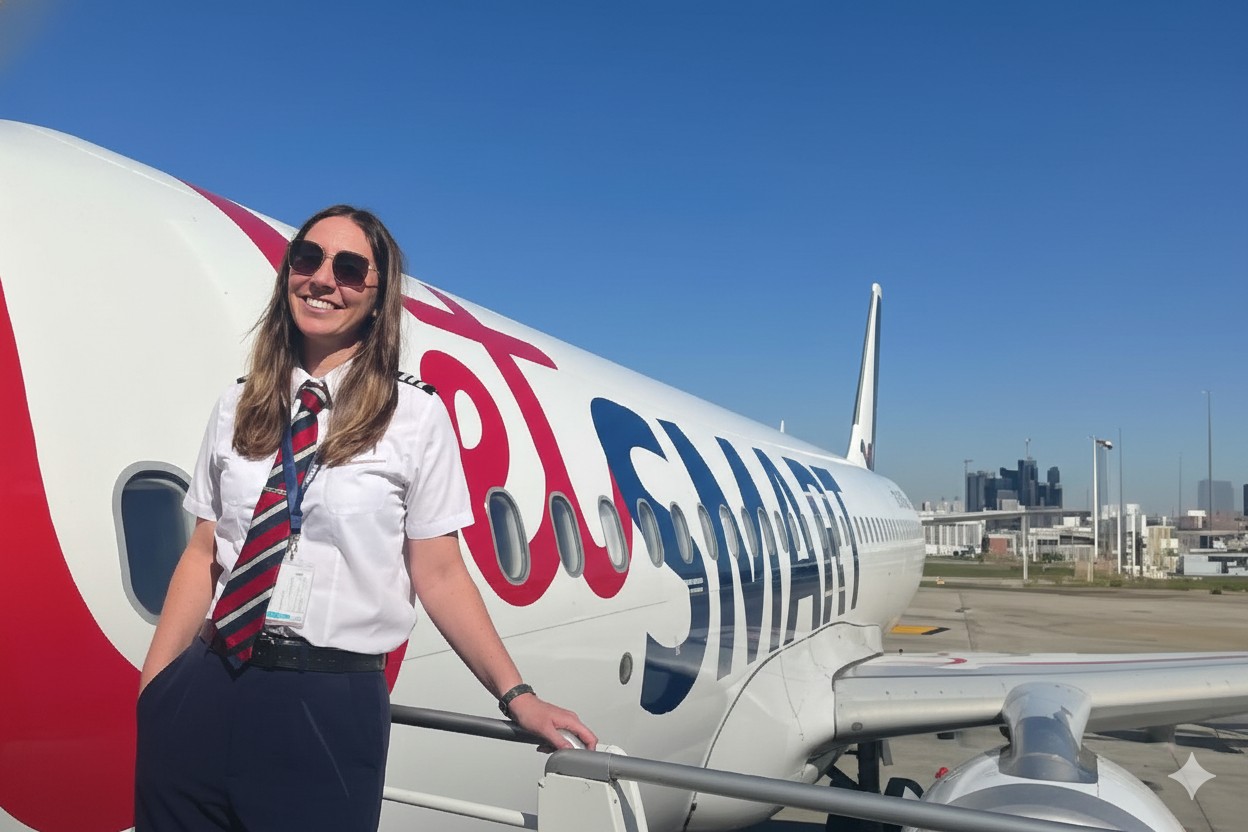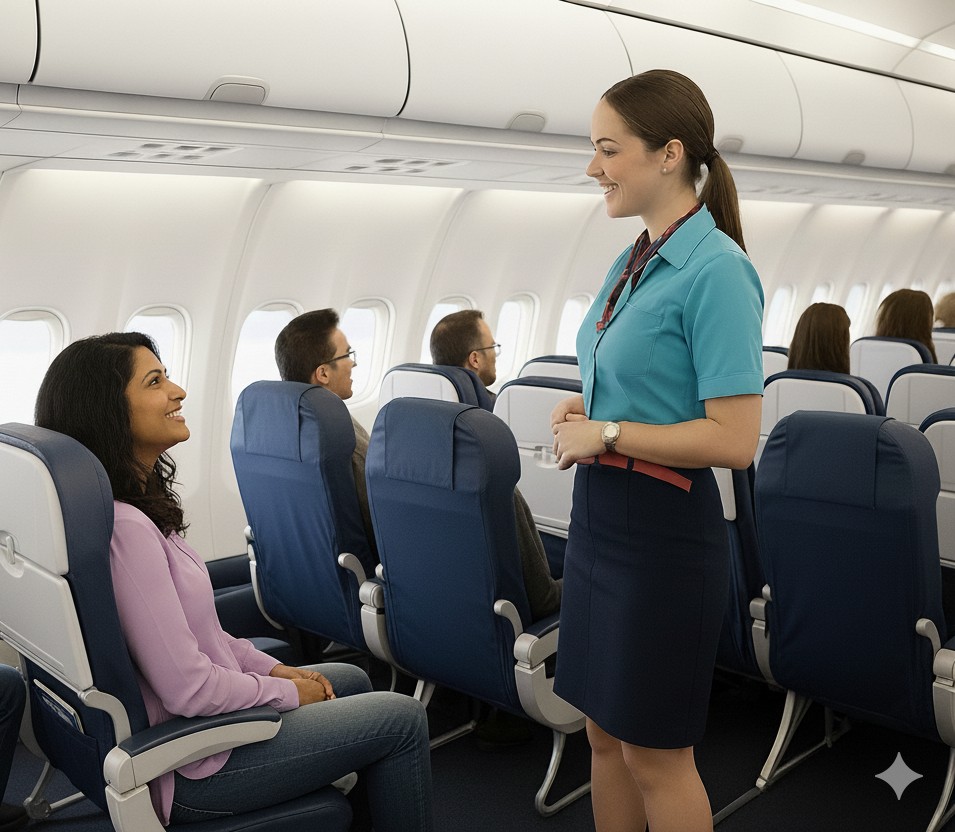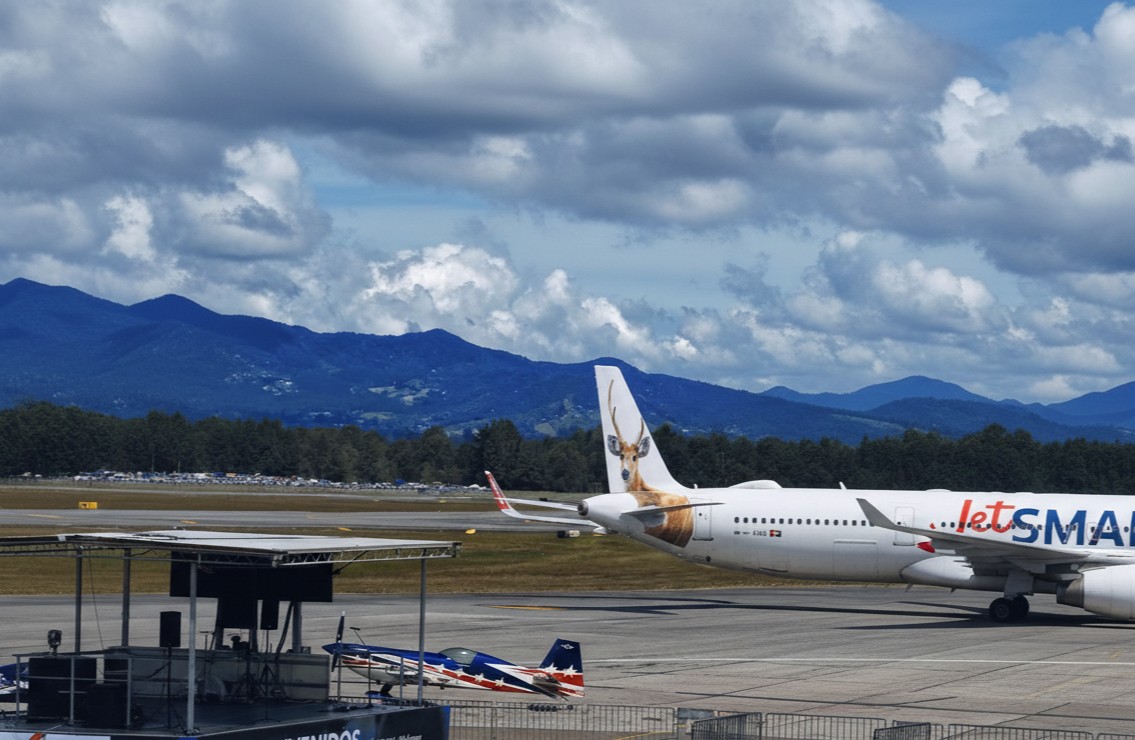October 9, 2025
JetSMART is one of those airlines that quietly started as a regional experiment and then grew into a low-cost contender across South America. Founded in Chile in 2016 and now expanding through the continent, the airline markets itself with one promise: fly smart, pay less.
If you’re used to the large U.S. carriers—Delta, United, or American—JetSMART will feel both familiar and different. Like them, it uses new Airbus aircraft and professional operations. But like Spirit or Frontier, it strips the flying experience down to its essentials: a base fare that gets you from point A to B safely.
We flew JetSMART to see if it truly delivers on its promise of safe, accessible, modern travel—or if “smart” just means “bare-bones.”
Want to know precisely how JetSMART compares to other budget airlines? Here’s our info box.
The New Player Making Latin America Fly Smart
 In 2025, JetSMART was recognized for the third consecutive time as the Best Low-Cost Airline in South America by the prestigious Skytrax World Airline Awards, reaffirming its growing reputation for safety, punctuality, and affordability. The award reflects not just new aircraft or low fares, but also the airline’s consistent effort to maintain reliability and customer satisfaction in one of the world’s most competitive emerging markets.
In 2025, JetSMART was recognized for the third consecutive time as the Best Low-Cost Airline in South America by the prestigious Skytrax World Airline Awards, reaffirming its growing reputation for safety, punctuality, and affordability. The award reflects not just new aircraft or low fares, but also the airline’s consistent effort to maintain reliability and customer satisfaction in one of the world’s most competitive emerging markets.
Before getting into the flight experience, it’s important to understand where JetSMART comes from and who’s behind it. It’s part of Indigo Partners, the same investment group behind Frontier Airlines in the U.S. and Wizz Air in Europe. That means its DNA is unmistakably low-cost, designed around efficiency, fast turnarounds, and high aircraft utilization.
The airline’s fleet is modern—entirely Airbus A320 and A321 aircraft, many of them new or recently delivered. The average plane age hovers under five years.
JetSMART’s presence in Colombia is growing quickly, with domestic routes between Bogotá, Medellín, Cali, and Cartagena, plus international connections to Santiago, Lima, and Buenos Aires. It’s a fresh, colorful brand trying to reshape how South Americans fly.
Booking and Fare Structure: The “Smart” in JetSMART
JetSMART’s booking process feels modern and fast. You pick a flight online or through its app, see an ultra-low fare that almost feels too good to be true, and then watch as extras appear in the next steps: seat selection, baggage, priority boarding, snacks, etc.
The fare categories are simple:
- SMART: the base fare (just your seat and one small personal item).
- SMART Pack or FULL Pack: bundles that include baggage, seat selection, and flexibility.
For the average traveler, the base fare looks incredibly cheap—sometimes under $30 USD for a domestic hop in Colombia. But once you add a checked bag (20 kg), a carry-on, and maybe your preferred seat, you’ll be closer to $60–$90 USD. Still, for what you get, it’s competitive.
The difference from U.S. legacy carriers is philosophical. Delta or American build some flexibility into fares, even at the cheapest level. JetSMART expects you to make all choices upfront. If you show up at the airport unprepared, fees multiply fast.
One of JetSMART’s biggest advantages, however, is transparency. The website clearly shows what each package includes, and a dynamic price bar updates in real time. You can see exactly how your decisions affect the total fare.
What might surprise first-timers is how little flexibility the cheapest tickets have. Changes or cancellations can cost more than the flight itself. That’s the price of ultra-low-cost efficiency: planes need to fly full and on time.
Baggage: Know the Rules, Avoid the Fees
We learned quickly that you must buy baggage online—doing so at the airport can be two or three times more expensive. Gate agents actually weigh personal items to ensure compliance.
One example: a passenger with an oversized backpack was told politely but firmly to check it in, paying about $35 at the counter. Staff handled it calmly but left no room for exceptions.
Compared to U.S. carriers, the enforcement is tougher than Delta or United (where overhead bin space is more flexible). But it’s on par with Spirit or Frontier, and actually more transparent
JetSMART’s baggage rules are strict but well-documented. Your ticket always includes one personal item that fits under the seat—maximum 45×35×25 cm and up to 8 kg (around 17 lb).
If you want a carry-on bag (55×35×25 cm, up to 10 kg), you’ll have to pay for it separately or select a package that includes it.
A checked bag (up to 23 kg) also costs extra unless included in a higher-tier bundle. Each extra kilo above 23 kg incurs a fee.
Check-in, Boarding, and First Impressions
JetSMART pushes for digital efficiency. Online check-in opens 72 hours before departure, and the mobile boarding pass works smoothly in major airports. If you wait until arrival to print it at the counter, expect a small fee—around $8–$10 USD.
On our Bogotá–Santiago flight, boarding took less than 20 minutes. Cabin music played softly while passengers settled, and overhead bins filled quickly (a common issue on low-cost flights). Those who prepaid carry-ons boarded first, ensuring their space.
The overall feel was efficient but friendly. It felt less chaotic than many budget airlines, perhaps thanks to its Copa-influenced training standards.
Cabin Design
 Stepping inside a JetSMART plane feels like entering a newer Frontier or Wizz Air. The Airbus cabin is sleek—gray and white tones, accented by light blue leather seats. Overhead bins are clean, LED lighting is soft, and the interiors smell new.
Stepping inside a JetSMART plane feels like entering a newer Frontier or Wizz Air. The Airbus cabin is sleek—gray and white tones, accented by light blue leather seats. Overhead bins are clean, LED lighting is soft, and the interiors smell new.
Seats are Recaro slimline, designed to save space and reduce weight. That means minimal padding and no recline, but surprisingly ergonomic posture support. Seat pitch is about 29–30 inches, similar to U.S. low-cost carriers and slightly tighter than Delta or United economy (31–32 inches).
The headrests are fixed, and tray tables are small—enough for a phone or a snack, not a laptop. There are no seatback screens, no Wi-Fi, and no USB outlets in most aircraft.
Still, we found the cabin comfortable for flights under three hours. On longer routes (like Bogotá–Santiago, around six hours), the lack of recline can be tiring. If you’re tall, paying extra for “Smart Seats” in the first rows is worth it—they offer 2–3 more inches of legroom.
One smart touch is branding: each plane’s tail features a unique wild animal and name (like “El Puma” or “El Cóndor”). It adds personality, and children onboard often get excited to find “their” animal.
In-Flight Service: Efficient and Friendly
JetSMART’s flight attendants embody the airline’s philosophy—warm, young, and disciplined. Every greeting feels genuine, and safety announcements are delivered clearly in Spanish and English.
There’s no first class, no business cabin, and no sense of hierarchy. Everyone is treated equally.
The crew’s main duties are safety and sales. About 30 minutes after takeoff, they roll out a small trolley with snacks and beverages for purchase. Prices are reasonable: bottled water, coffee, chips, sandwiches, and soft drinks between $2 and $8 USD. Alcoholic drinks are also available on some routes.
If you’re expecting the complimentary coffee service typical on Delta or American, this is where you’ll feel the difference. Everything on JetSMART is pay-per-use, and you’ll need a credit or debit card—cash is rarely accepted.
Entertainment and Connectivity
There’s no in-flight entertainment, Wi-Fi, or streaming portal. For short flights, that’s not a big deal, but for international routes beyond three hours, the silence can feel long.
Passengers mostly rely on their own devices, books, or naps. On evening flights, the ambient lighting shifts to purple and blue, giving a relaxed atmosphere.
JetSMART’s app and website encourage passengers to “bring your own fun.” They even suggest downloading content before boarding. It’s honest marketing that sets expectations realistically.
Compared with U.S. carriers, JetSMART is behind in connectivity. Delta and United both offer fleetwide Wi-Fi; even Frontier has begun rolling out streaming options. JetSMART’s simplicity means fewer technical failures—but also fewer amenities.
Got To Pay for What You Want
 JetSMART’s “SMART Menu” is printed on the seat pocket card and in the app. It includes local snacks—Chokis cookies, Ramo ponqué cakes, Club Colombia beer, Coca-Cola, and instant coffee—plus international items like Pringles or Red Bull.
JetSMART’s “SMART Menu” is printed on the seat pocket card and in the app. It includes local snacks—Chokis cookies, Ramo ponqué cakes, Club Colombia beer, Coca-Cola, and instant coffee—plus international items like Pringles or Red Bull.
Food is sold à la carte, and you can mix and match combos. For instance, a sandwich, drink, and snack might cost around $8–$10 USD. Everything is packaged neatly and served cold.
We liked that JetSMART keeps prices consistent across routes—no surprise markups for longer flights. And while there are no hot meals, the options are fresh and local.
Some flights (especially longer ones like Santiago–Lima) offer small “seasonal menu” upgrades with better snacks. Still, it’s far from the complimentary meal service of Delta’s long-haul economy or American’s Latin routes.
What sets JetSMART apart is honesty: you’re not paying for meals you didn’t ask for. You buy what you need, and the rest of the ticket price goes toward the essentials—safety and punctuality.
Punctuality and Reliability
JetSMART takes pride in on-time performance. It regularly ranks among the most punctual low-cost airlines in South America, with reported averages near 85–90% on-time departures.
Our own flights left within 10 minutes of schedule and arrived early. Boarding was swift, and baggage arrived quickly.
The airline’s small but growing network allows tight turnaround times—planes land, unload, reload, and depart within 30–40 minutes. Crews clearly operate on efficiency metrics similar to those of Frontier or Wizz Air.
When delays happen, JetSMART is transparent about causes. During a weather delay in Medellín, our captain made clear announcements every 15 minutes, and the crew offered free water while we waited.
Compared to U.S. budget carriers, JetSMART’s punctuality feels disciplined. It doesn’t overextend its schedule and rarely double-books aircraft.
Safety and Fleet Standards
JetSMART’s fleet safety is one of its strongest points. All aircraft are new-generation Airbus A320neo and A321neo models, equipped with modern avionics and efficient engines. The airline operates under Chilean aviation authority oversight, which is aligned with ICAO (International Civil Aviation Organization) standards.
To date, JetSMART has not had a major accident or fatal incident.
The airline proudly advertises “the youngest fleet in the Americas.” Flying on a new jet feels different—quieter engines, cleaner interiors, and a sense of security that even seasoned travelers appreciate.
Customer Service and Communication
Customer service is where most low-cost airlines stumble—and JetSMART is no exception, though it’s improving.
You can contact JetSMART through its website chat, WhatsApp, or social media. Response times vary: sometimes within hours, sometimes a day. Phone hotlines exist but often redirect you to online channels.
At airports, JetSMART counters are efficient, but limited in staff. Agents tend to be friendly but firm, enforcing baggage and fare rules without flexibility.
Where JetSMART outperforms is transparency: gate changes, delays, and check-in reminders are communicated promptly via SMS or email. You’re never left in the dark.
The main complaint travelers voice online is refund speed. Because low-cost fares are mostly non-refundable, getting credits or vouchers can take weeks. Still, compared to Frontier or Spirit, JetSMART’s responsiveness is marginally better.
Critiques: What Passengers Should Know
Even the smartest airline has flaws. Based on our experience, here are JetSMART’s main critiques:
No free water or snacks: Everything costs extra. Even basic hydration is a paid add-on unless offered for medical or safety reasons.
Tight seat pitch: At 29 inches, taller passengers will feel cramped on longer flights.
No Wi-Fi or power: In an age of digital connectivity, the absence of outlets is noticeable.
Strict baggage enforcement: Staff weigh and measure bags carefully. Travelers unfamiliar with low-cost rules often feel surprised.
Limited support in disruptions: Rebookings or refunds can take time, especially during weather events or strikes.
Non-transferable tickets: Changes of name, route, or date can cost nearly as much as a new ticket.
No loyalty program yet: Frequent flyers have no way to accumulate miles, though the airline has announced future plans for a “SMART Points” system.
Minimal onboard comfort: Non-reclining seats and small trays make long flights challenging.
These trade-offs are the price of low fares. JetSMART doesn’t hide them; it advertises them openly as the cost of “flying smart.”
Comparing JetSMART to Other Budget Airlines
| Category | SATENA | Wingo | JetSMART |
| Airline Type | State-owned regional carrier (connects remote Colombian towns) | Colombian low-cost carrier (owned by Copa Holdings) | South American ultra-low-cost carrier (Indigo Partners) |
| Primary Network | Domestic Colombia + remote routes | Colombia + Caribbean/Central America | Chile, Peru, Argentina, Colombia + regional internationals |
| Cabin Classes | Single-class economy | Single-class economy | Single-class economy |
| Fare Model | Simple economy; few upgrades | Ultra-low base fare + paid add-ons (bundles available) | Ultra-low base fare + paid add-ons (bundles: SMART/Full) |
| Free Bags | Often includes 1 checked bag (~10–15 kg); carry-on capped at ~5 kg (strict) | Personal item only (≤6 kg) free; carry-on/checked are paid | Personal item only (≤~8 kg) free; carry-on/checked are paid |
| Carry-on Enforcement | Very strict (small aircraft weight limits) | Strict but courteous | Strict and consistent |
| Seat Pitch & Comfort | ~29–31″; basic turboprop/ERJ seats; limited recline | ~30–31″; slimline seats; “Extra Space” rows for a fee | ~29–30″; slimline, mostly no recline; “Smart Seats” up front |
| Power / Wi-Fi / IFE | No Wi-Fi; no streaming/seatback IFE | No Wi-Fi; no IFE | No Wi-Fi; no IFE |
| Food & Drink | Minimal/none on short hops; occasional snack on longer domestic legs | Buy-on-board only | Buy-on-board only |
| Punctuality | Variable (remote ops/weather constraints) | Strong for a low-cost carrier | Strong; quick turnarounds |
| Reliability & Recovery | Limited recovery options at small stations | Lean fleet; rebooking possible but can be slow | Lean fleet; transparent comms but limited flexibility |
| Customer Service | Small stations; communication can feel ad hoc | Friendly cabin attitude; support can be slow online | Friendly onboard; digital-first support, variable speed |
| Fleet | ATR 42/72, ERJ-145, Twin Otter (mixed ages) | Boeing 737-800 (mid-age, well kept) | Airbus A320/A321 (young fleet) |
| Best For | Reaching remote Colombian destinations | Short-haul budget trips with good punctuality | Cheapest fares on modern jets; plan-ahead travelers |
Final Thoughts
We want to be fair: JetSMART has achieved something remarkable in a short time. With one of the youngest fleets in South America and the recognition as Best Low-Cost Airline in the region at the 2025 Skytrax Awards, it has proven that efficiency, punctuality, and accessibility can coexist in a market that used to be expensive and limited. Its planes are modern, its fares are genuinely low, and for many travelers, it has opened the door to destinations that were once unreachable by air.
But it’s also impossible to overlook what so many passengers have experienced in recent months: abrupt cancellations, confusing rebookings, slow responses, and a customer service structure that often feels unreachable. The volume of complaints paints a picture of an airline that, while operationally capable, still struggles to treat its passengers with the seriousness and consistency they deserve.
Flying JetSMART today means choosing an extreme budget option—one that delivers safety and punctuality, but very little else. Comfort, flexibility, or onboard amenities are not part of the equation here. If you travel light, expect nothing beyond the essentials, and value getting from point A to B for the lowest possible cost, JetSMART will probably do its job. If you’re seeking reliability, support, or a pleasant in-flight experience, you may want to look elsewhere.
Meet the Team
We’re creators, marketers, and explorers — united by our love for Colombia and passion for storytelling. From content creators and strategists to social media experts and tour managers, we bring your journey — or your brand — to life.
CEO & Founder
Shawn Christopher Leamon
Read More
Social Media Director
Daniel Cardenas
Read More
Operations
Camilo Ceballos
Read More
Graphic Designer
Juan Sierra
Read More
Sales Manager
Juliana Gama
Read More
Social Media Specialist
Dayana Parra
Read More
Sales
Fabian Briñez
Read More
Sales
Johanna Vargas
Read More
Content & Multimedia Strategist
Diana Bustos
Read More
Visual Content Creator
Gabriela Munoz
Read More
Marketing Tours & Content Manager
Sergio Gonzalez
Read More
Storytelling Specialist
Brian Nino
Read More
Finance & Strategy Lead
Fernando Soto
Read More
CEO & Founder
Shawn Christopher Leamon
Read More
Social Media Director
Daniel Cardenas
Read More
Operations
Camilo Ceballos
Read More
Graphic Designer
Juan Sierra
Read More
Sales Manager
Juliana Gama
Read More
Social Media Specialist
Dayana Parra
Read More
Sales
Fabian Briñez
Read More
Sales
Johanna Vargas
Read More
Content & Multimedia Strategist
Diana Bustos
Read More
Visual Content Creator
Gabriela Munoz
Read More
Marketing Tours & Content Manager
Sergio Gonzalez
Read More
Storytelling Specialist
Brian Nino
Read More
Finance & Strategy Lead
Fernando Soto
Read More
